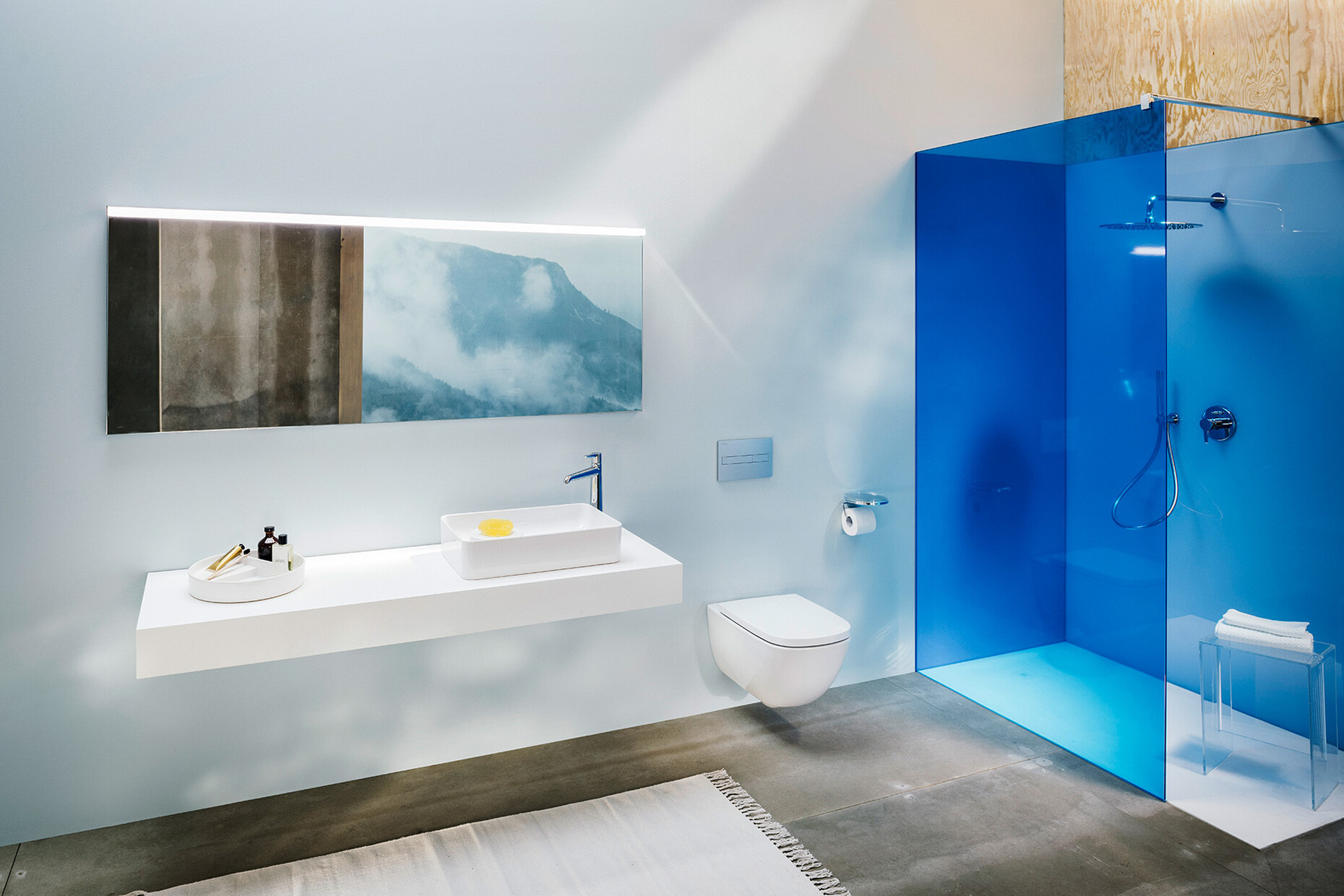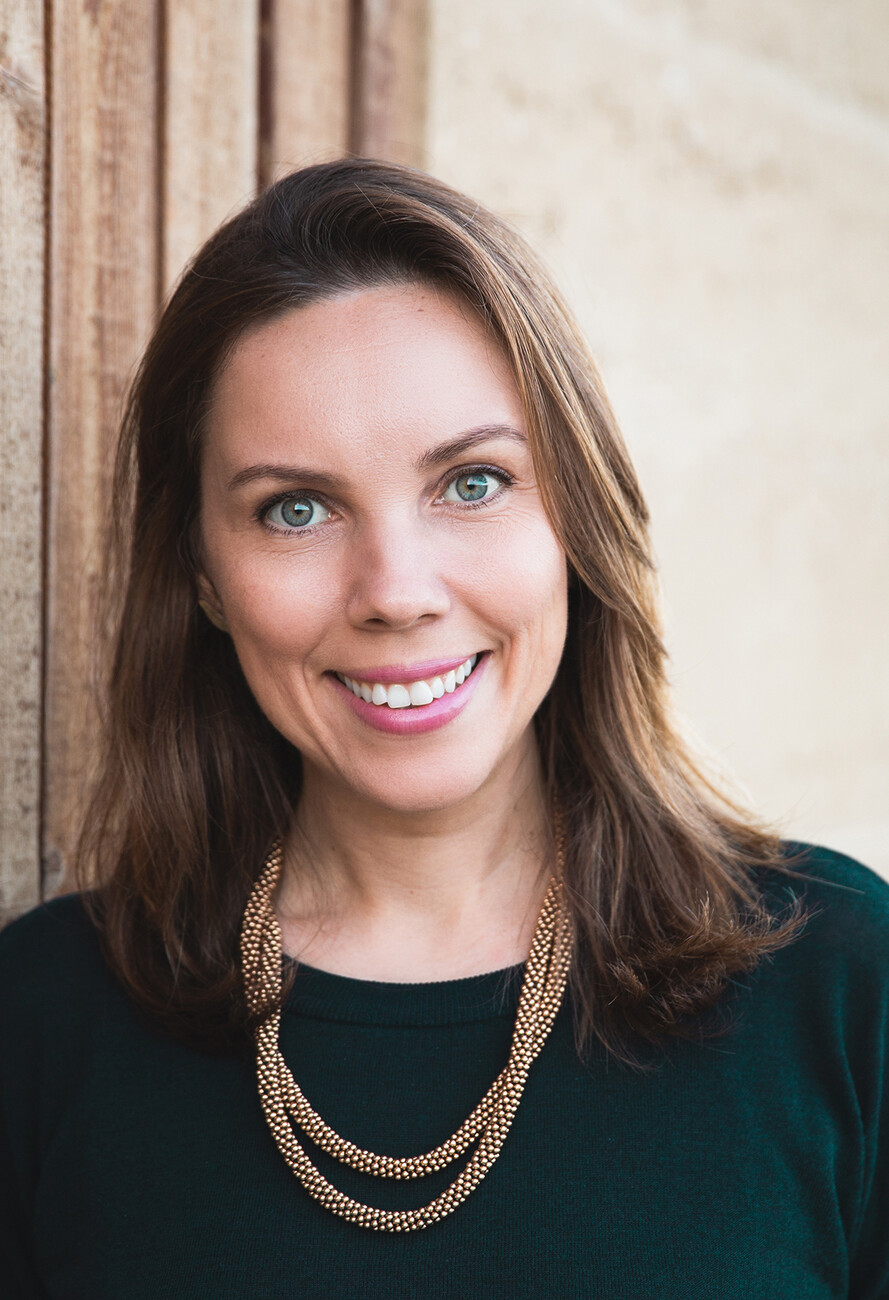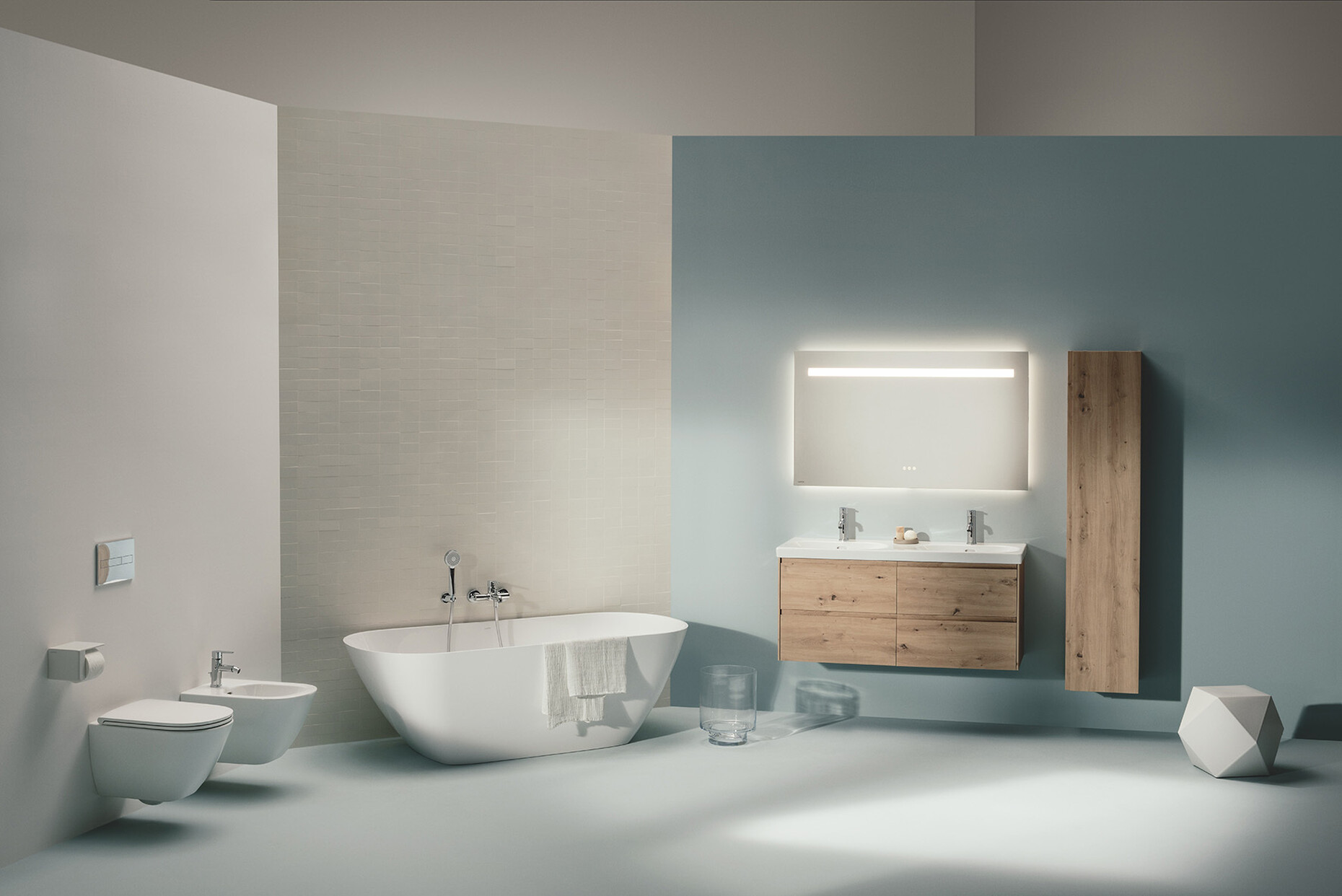Featured
Creating a sharper awareness
Anna Moldenhauer: Ms. Kopp, What are the drivers of Laufen's sustainability strategy?
Cristiane Kopp: Our strategy is based on three pillars: decarbonization, circular economy, and people and society. By investing in innovations that enable us to transition to a circular economy, we gradually and continuously reduce our GHG emissions and actively contribute toward the United Nations Sustainable Development Goals. We also strive to work closely with interest groups outside of our own organisation, as we believe that more can be achieved if we align our sustainability goals. We have initiated many processes internally, but much bigger impacts can be achieved when we engage external stakeholders, too.
How do you intend to meet the zero emissions target?
Cristiane Kopp: We have just launched the world’s first electric kiln for the manufacturing of sanitary ceramics, which not only runs entirely on renewable energy, but also requires only two thirds of the energy that a conventional kiln requires. This is a momentous milestone, which has the potential to revolutionise the entire industry. In addition, we are also calculating in detail our Scope 3 emissions, as they form the largest chunk of our emissions, encompassing the GHG emissions associated with materials procurement, transportations, end of a product's lifespan to name a few.
Which initiatives are running in parallel?
Cristiane Kopp: We want to power all our production operations from renewable sources, therefore we are investing in PV installations for onsite generation of clean energy, as well as in the development of new technologies that will enable us completely move away from fossil fuels. In parallel to this, we are working to increase the reuse or recycling of raw materials, water and energy, while also minimsing our consumption of plastics, particularly single-use plastics in packaging. Accuracy and transparency in communication is also an important topic for us, as confusing or misleading sustainability messages prevent customers from making the appropriate product choices for their projects.
How can a circular approach be adopted with the current Laufen product lines?
Cristiane Kopp: We address the circular economy at three levels: internal production processes; the products in their design, use phase and end of life stage; and the sanitation infrastructure as a whole. To give you some examples of what we are doing at product level: toilet seat covers can get scratched during transportation due to their movement inside their cardboard packaging. Up until recently, a thin sheet of polyethelyne foam was used to prevent the friction between the toilet seat cover and the cardboad box. Together with our packaging supplier, we have developed a packaging box with a chalk lining on the inside, which prevents all scratches, eliminating the need for polyethylene foam. The new cardboard packaging can still be recycled normally, and we save approx. 1.7 tons of foam per year. We are not keeping the development of this packaging solution exclusive for Laufen; in fact, we hope that other manufacturers feel inspired to adopt this solution too. Another example, at product level, is the new composition of our Marbond shower trays, in which we have replaced the conventional, fossil fuel based resin with a resin made from recycled PET bottles. The development of this new material is the result of a long phase of research in which we also tested the replacement of mineral compounds with biological materials such as rice husk, or the use of biological resins.
Ultimately, we found that the use of PET recycled resin enabled the biggest reduction of the carbon footprint of our Marbond shower trays. We also see ourselves in the responsibility of helping to tackle issues pertaining to the wider sanitation infrastructure. Whereas we might not be able to solve those issues by ourselves, we can certainly leverage our design and manufacturing capabilities and make a significant contribution. A case in point being the development of Laufen’s urine separation toilet “SAVE!” together with design studio EOOS and the Eawag, one of the world’s leading aquatic research institutes, based in Switzerland. The separation of urine inside the toilet makes it much easier to recover valuable nutrients present in urine, namely nitrogen and phosphorus. The removal of these nutrients from the wastewater enables them to be turned into fertilisers more easily, as well as preventing them from landing in rivers and oceans, which threatens biodiversity.
What’s the status of your innovative “SAVE!” product?
Cristiane Kopp: A large part of our work currently revolves around raising awareness for the benefits of separating and recycling urine. If the waste streams are separated as soon as they are produced, they can be processed more sustainably in order to recover valuable resources, and wastewater management becomes part of the circular economy. In addition to that, the effort required at municipal wastewater treatment plants is reduced immensely, as 1.5 litres of human urine currently contaminate approx. 180 litres of wastewater. The negative impacts on water that come from too much nitrogen and phosphorous are well known, but lesser known are the opportunities that arise from sustainably managed sanitation. For instance, if the system is linked to the cultivation of parkland or green buildings, then new alliances could emerge between municipalities and building owners or developers. We seek to act as a conduit between these multiple stakeholders in a manner that goes well beyond simply selling our products.
Are there reference projects that already make use of “SAVE!”?
Cristiane Kopp: “SAVE!” has already been integrated in residential and commercial projects in Switzerland, Italy, Austria and Germany. Furthermore, research projects in partnerships with universities are ongoing in Belgium and the United Kingdom.
In its ceramic production process, Laufen already reuses and recycles water and ground ceramic waste. Can the heat from the kiln be reused too?
Cristiane Kopp: Heat recovery is a technology that helps us save energy and reduce emissions. In the first stage of production, a liquid ceramic slip is cast into moulds. After a period of time, the products are removed from their moulds and need to be air dried, so that they become rigid enough to move onto the glazing. For that, we redirect the hot air that comes out of the kiln to the rooms in which the products are drying.
What are the priorities on your agenda at present?
Cristiane Kopp: As mentioned before, we have multiple ongoing projects that are part of our sustainability roadmap. Two highlights that I can mention here are the substantial investments we are making in the transition towards renewable energy, with the expansion of onsite generation through PV panels, as well as the development of new technologies that will allow us to produce ceramic products using clean energy. And the continuing work to optimise our packaging, focusing chiefly on the elimination of single use plastics.















